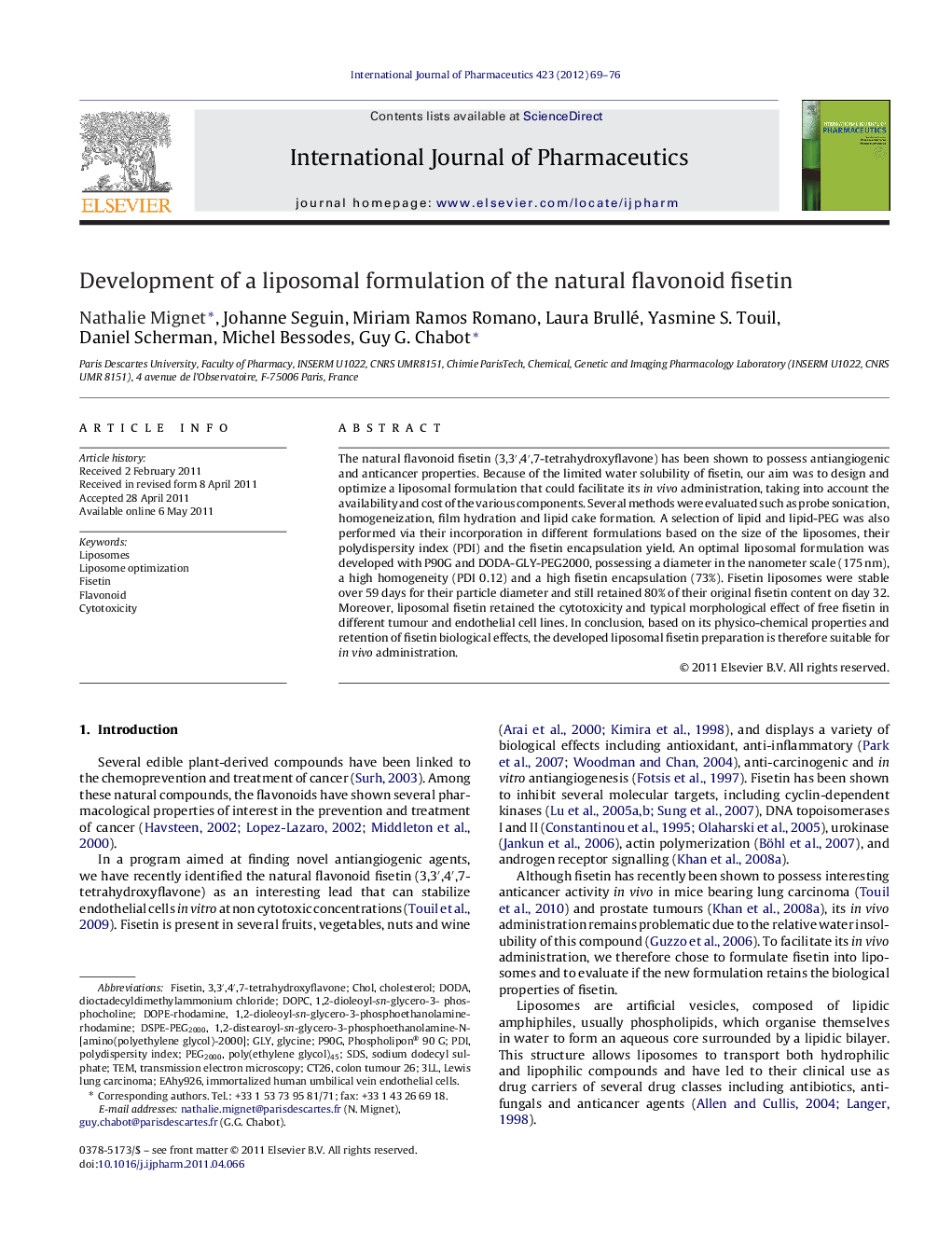| Article ID | Journal | Published Year | Pages | File Type |
|---|---|---|---|---|
| 2503048 | International Journal of Pharmaceutics | 2012 | 8 Pages |
The natural flavonoid fisetin (3,3′,4′,7-tetrahydroxyflavone) has been shown to possess antiangiogenic and anticancer properties. Because of the limited water solubility of fisetin, our aim was to design and optimize a liposomal formulation that could facilitate its in vivo administration, taking into account the availability and cost of the various components. Several methods were evaluated such as probe sonication, homogeneization, film hydration and lipid cake formation. A selection of lipid and lipid-PEG was also performed via their incorporation in different formulations based on the size of the liposomes, their polydispersity index (PDI) and the fisetin encapsulation yield. An optimal liposomal formulation was developed with P90G and DODA-GLY-PEG2000, possessing a diameter in the nanometer scale (175 nm), a high homogeneity (PDI 0.12) and a high fisetin encapsulation (73%). Fisetin liposomes were stable over 59 days for their particle diameter and still retained 80% of their original fisetin content on day 32. Moreover, liposomal fisetin retained the cytotoxicity and typical morphological effect of free fisetin in different tumour and endothelial cell lines. In conclusion, based on its physico-chemical properties and retention of fisetin biological effects, the developed liposomal fisetin preparation is therefore suitable for in vivo administration.
Graphical abstractDevelopment and optimization of a fisetin liposomal formulation that retains cytotoxic and morphological effects of free fisetin on endothelial cells.Figure optionsDownload full-size imageDownload as PowerPoint slide
